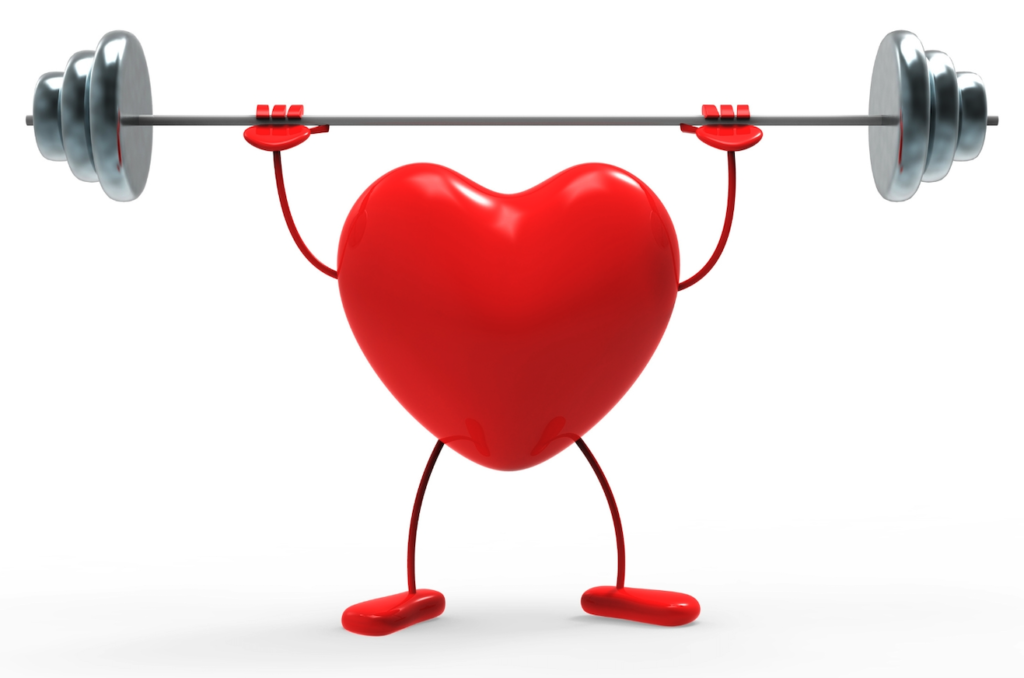Best Exercises for Menopause Symptoms and to Keep Your Heart Healthy

The aim of this year’s World Menopause Day on 18th October is to raise awareness of the links between menopause and the potential risk of cardiovascular disease (CVD) in women. Given that around 13 million women in the UK, or a third of the female population, are currently in the perimenopause or menopause stage, and that CVD is responsible for 35% of deaths in women each year, it’s an issue that really can’t be ignored.
Here’s what you need to know…
Breast cancer is widely believed to be the biggest threat to women’s health but, according to the World Heart Federation, CVD, including heart attacks, coronary artery disease, heart failure and stroke, kills more women every year than all the cancers combined, despite advances in both diagnosis and treatment.
Reproductive milestones in a woman’s life, including menopause, have now been linked to increased cardiovascular risks, with hormonal changes affecting the heart as oestrogen levels drop, cholesterol levels rise and fatty plaque builds up in the arteries.
The menopause is a natural transition period in a women’s life when the oestrogen levels produced by the ovaries decline and she longer releases an egg each month. Menopause usually occurs between the ages of 45 and 55 and lasts around 7 years. In the UK, the average age for a woman to reach menopause is 51, although symptoms can start in the mid 30s with perimenopause and continue well into the mid 50s. Menopause is reached when a woman hasn’t had a period for 12 consecutive months and is no longer able to get pregnant naturally.
The menopause transition provides an opportunity to take positive steps towards a healthier lifestyle and a proactive approach to a healthy heart through balanced diet, weight management, quality sleep, not smoking and regular exercise.
Get Moving
As women move into midlife, a healthy body is key to supporting a healthy heart, undoubtedly the most important muscle in the body. The stronger your body and the more freely you’re able to move it, the more your inner body – digestion, cortisol levels and detoxification process – can work effectively.
Experts recommend a minimum 2.5 hours of moderate exercise a week – think a brisk walk, a round of golf or a swim five times a week – or around 1.5 to 2.5 hours of energetic exercise like jogging, fast cycling or playing an energetic team sport. You should also ideally aim to add in a couple of sessions of strength or resistance training every week.
It’s about making sensible choices and finding activities that you enjoy. The more you move your body, the more calories you’ll burn. A good goal is to stay on your feet for as much of the day as you can, so meet a friend for a walk in the park instead of for coffee, take regular breaks away from your desk (sitting still for lengthy periods has been linked to increased abdominal fat) and try to increase your step count whenever and whatever you are doing.
Take quality time out for yourself with mindful meditation, Tai Chi yoga and mobility stretching are all highly beneficial to mental wellbeing, relaxing both mind and body and reducing stress levels.
Resistance: Weight Training
Andy McGlynn of NAPTP, a Clinical Nutritionist, Coach and Mentor to other PTs, is excited about the massive benefits of weight training in menopause.
A recent 2023 study referenced weight training as being more effective than aerobic training in reducing menopausal hot flushes. Apart from the general benefits of weight training – improved body composition, enhanced strength of the entire body and increased bone density and health – there are also very specific added benefits to incorporating resistance training into your weekly regime when going through menopause and the associated symptoms.
A well-balanced weight training programme three times a week is optimum for combatting menopause symptoms and the associated cardiovascular risks. Research shows that training with weights not only increases muscle mass but improves everything from cognitive function and health to glucose control and insulin sensitivity, while preserving metabolic rate and leading to better hormonal balance in the body.
Andy advises keeping it simple to start with by splitting the movement patterns of the body in to two workouts, prioritising compound exercises that work multiple muscle groups at the same time. Workout one, for example, could be lower body incorporating lunges, squats and some form of bending pattern exercise, with workout two including ‘push’ and ‘pull’ exercises like deadlifts and incline bench presses and ideally a form of rotating movement. When first starting out, he recommends repetitions in the 15-25 rep range to condition the stabilising muscles, but without over-thinking it too much, rather rely on intuition and listen to your own body. To progress, you can gradually increase the weight and start to bring the rep range a little lower, thereby increasing the load and switching the focus between different muscle fibre groups.
Resistance training has been consistently shown to improve insulin sensitivity, especially in older women, meaning that the body is better able to process and soak up carbohydrates rather than storing them as body fat. Weight training also increases metabolic rate by increasing fat-free mass, which typically drops after menopause.
Aerobic: Rebounding
Rebounding, or exercising aerobically on a mini-trampoline, can be a game-changer for women experiencing menopause symptoms, as well as being a fun form of cardio.
Kimberlee Perry CEO of Bouncefitbody, the UK’s leading resistance-based fitness brand specialising in mini trampoline fitness, advises that rebounding during menopause offers an enormous range of benefits including improving muscle mass, bone density and pelvic floor strength, as well as stimulating the lymphatic system, aiding detoxification and hormone balance. It’s also fantastic for enhancing balance and coordination, whilst also boosting oxygen levels and therefore optimising cell function and contributing to an overall sense of well-being.
Research carried out by NASA found that rebounding helped astronauts to regain their muscle mass and bone density after returning from space, proving to be around 68% more effective than jogging.
Holistic: Pilates
A holistic exercise like Pilates works wonders for menopause symptoms like joint pain and stress, when combined with aerobic workouts and weight training. Pilates focuses on balance, posture and flexibility, mobilising the body, building muscle strength to aid joint support and improving weaknesses in the core, deep abdominals and pelvic floor, which can lead to the dreaded ‘meno-belly’ muffin top.
Pilates increases muscle and bone mineral density at a time when women need it most as the metabolism naturally slows down, muscle mass decreases and oestrogen levels decline resulting in reduced bone strength and density. The conscious breathing patterns used in Pilates help to calm the nervous system by forcing you to focus on your body and clearing your mind of other distractions.
Depending on the type of class you choose, Pilates uses a combination of spring-loaded resistance machines with mat-based exercises where the body works against gravity like planks, knee hovers and pelvic tilts.
Sally-Ann Turner, MD and Founder of Bodyline Medical Wellness Clinics, has this to say:
“The menopause can be a daunting time with severely debilitating symptoms impacting all parts of a woman’s life. Ensuring optimised health and wellbeing through this changing stage of life is key, especially with regards to cardiovascular health.
Finding an activity that you enjoy makes it so much easier to maintain. Create a virtuous circle where exercise lifts your mood, therefore making you both feel better and sleep better so you are more likely to exercise the following day. As you gain muscle, your body will burn calories more efficiently, helping you to lose or maintain weight and keep your heart healthy.”




